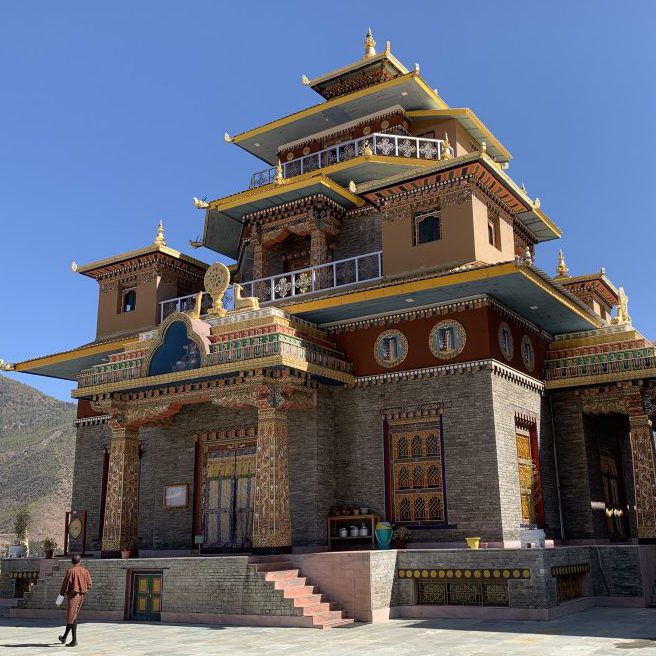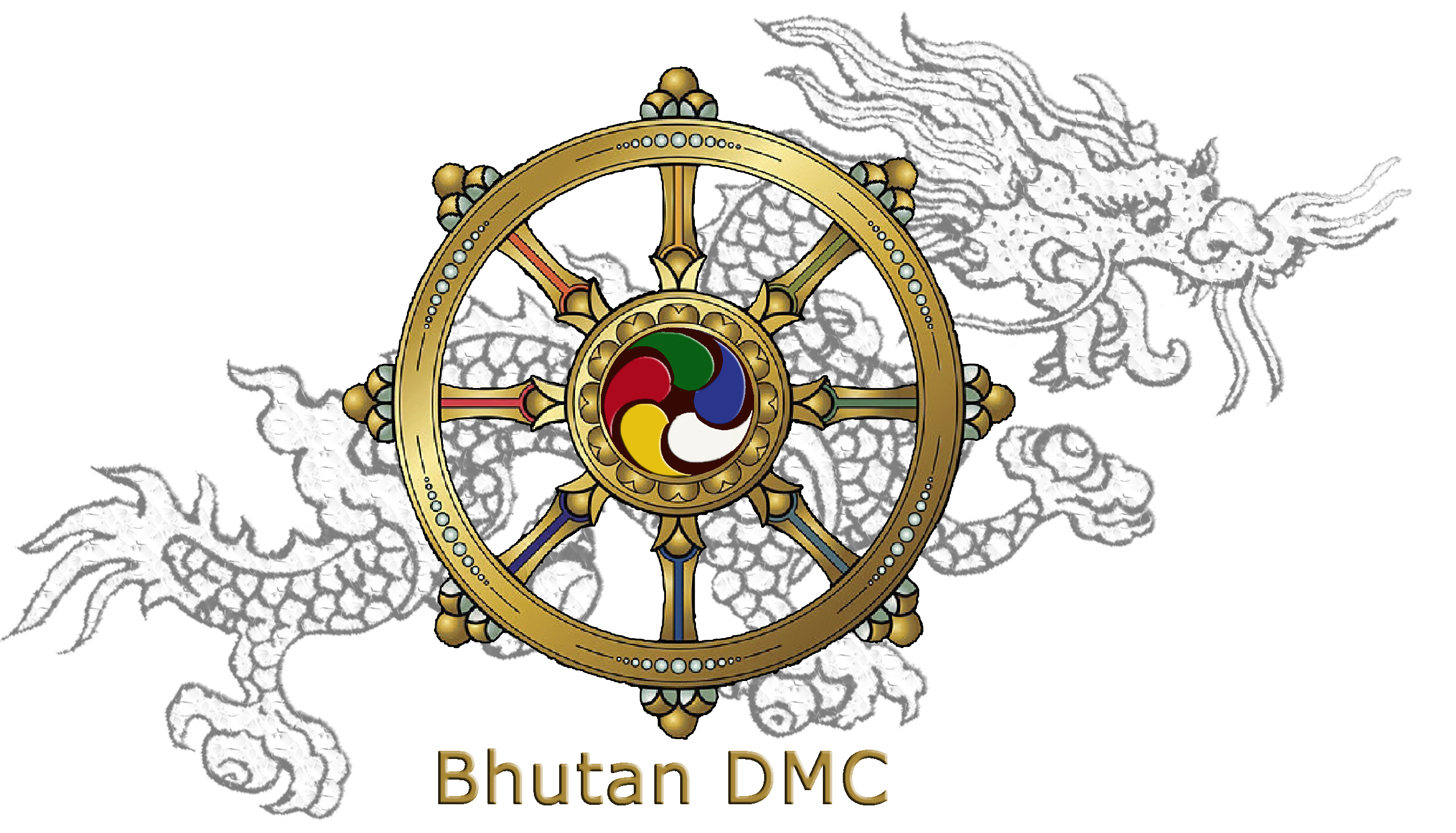2,200 m
Elevation
Tiger's Nest Monastery
Home to
7,364 ft
Airport at

About Paro
The broad Paro valley is the entry point for all visitors arriving Bhutan by flight. This visually stunning and historically fascinating valley is home to many of Bhutan’s oldest temples, monasteries and the country’s only international airport. Ta Dzong (national museum) is located here and famed Taktsang monastery clings to a sheer cliff, which is 900m (3000 feet) above the valley floor.
Places to visit in Paro
Rinpung Dzong (Paro Dzong)
Also known as ‘fortress of a heap of jewels’ and built in 1646 by Shabdrung Ngawang Namgyal, this majestic Dzong stands on a hill above Paro township. The approach to the Dzong is through a traditional covered cantilever bridge. A walk through the bridge to the Dzong, over a stone inlaid path, offers a good view of the architectural wonder of the Dzong as well as life around it. Every year one of the biggest and country’s most popular festival, called Paro Tshechu held at courtyard of this Dzong and is the best time for visitors to experience Paro at its full glory.
Ta Dzong
On a ridge immediately above Rinpung Dzong is Ta Dzong originally built as watchtower. In 1968, Ta Dzong was inaugurated as the first National museum, and now holds a fascinating collection of art, relics, religious thangkha paintings, Bhutan’s exquisite postage stamps, coins and handicrafts, together with a small natural history collection. There are more than 3000 works of art and artefacts from as early as 4000 BC to the present day.
Kyichu Lhakhang
This is one of the 108 temples built by the Tibetan King Songtsen Gyampo in the 7th century, in a single day, to subdue the ogress that lay across the whole of Himalayas. There is another temple said to be built on the same day called Jampey Lhakhang in Bumthang. It is believed that Kyichu was built over her left foot and Jampey Lhakhang over the left knee. Later in 1968, Her Majesty, the Royal Grandmother Ashi Kesang Choden Wangchuck, built a second temple alongside the first one, in same style. Inside the courtyard, there is an orange tree that bears fruit, which is quite amazing because no where in the valley you can find orange trees bearing fruits with the exception of one at this temple.
Taktsang Monastery (Tiger’s Nest)
The Tiger’s Nest or the Taktshang is one of the most popular spiritual heritage sites, perched precariously on the rockface of a sheer cliff 900m above Paro valley floor. It is said that Guru Rinpoche arrived here on the back of a tigress and meditated at this monastery hence it is called ‘Tiger’s Nest’. This site has been recognized as most sacred and visited by all Bhutanese at least once in their lifetime.
From the road point, the hike up to Taktsang, on a well-maintained path, is quite uphill and takes around 3-4 hours at an average walking speed while round trip excursion to the monastery is of about total 5 / 6 hours. Ponies are available up to first viewpoint of monastery where Taktsang cafeteria is located which is ideal point for lunch or tea / coffee.
Drukgyel Dzong
This Dzong, with a delightful village nestled at its foot, was built in 1646 by Zhabdrung Ngawang Namgyal to commemorate his victory over the Tibetan invasions. ‘Druk’ means the Land of the Thunder Dragon or the Land of Dragon people, while ‘Gyel’ means victory. The Drukgyel Dzong caught fire in 1951 and currently under restoration. This Dzong is built at a strategic point where the route from Tibet enters the Paro valley. Later when the invasion ceased, this route was used for trade between Tibet and Bhutan. On a clear day, one can see the beautiful view of majestic mountain Jumolhari from the village, nestled below the Dzong.
Druk Choeding Temple
Built in 1525, this town temple was built by Ngawang Chhogyel, one of the prince-abbots of Ralung in Tibet and an ancestor of Zhabdrung Ngawang Namgyal.
Dzongdrakha temple
Often called the mini – Taktsang, Dzongdrakha temples are built on the cliff overlooking the Paro valley. The walk there is not as strenuous as to Taktsang. Four shrines of Drolma (Tara), Tsheringma (Goddess of Longevity), Guru Rinpoche and the Future Buddha (Maitreya) are the main attractions of the monasteries. Also, these set of monasteries hosts the popular Dzongdrakha Tshechu the day before and after the popular Paro festival.
Dungtse Lhakhang
Located near Paro town, this small three-storey monastery is located in Jangsa village. According to legend, the great Tibetan saint, Thangtong Gyalpo, built it in 13th century, after subduing an ogress on top of her head. This temple is unique in Bhutan as its painting show the progressive stages of tantric Buddhist philosophy as well as the most important deities and figures of the Drukpa Kagyupa School.
Tamchog Lhakhang
This temple is located along the Paro – Thimphu highway, just across the Paro river. The monastery was built by great Tibetan saint, Thangtong Gyalpo, who is best known as founder of the Tibetan opera. He was a great Buddhist master, yogi, physician, blacksmith, architect and pioneering civil engineer.
Kila Gompa
It is located below Chelela pass, on the way to Haa valley, and distanced at about 27 km from Paro town. Kila Gompa is peaceful home for Buddhist nuns who have dedicated their lives to spiritual fulfillment and lead peaceful lives of religious studies, prayer and meditation. Kila means a subjugating spiritual dragger that destroys the negativities. This place has seven little temples built on the cliff-side facing Paro valley. From motorable road, it is about 45 minutes’ walk and trail supports great view of Paro valley, Jele Dzong, Mt. Chomolhari and Mt. Jichu Drake.
